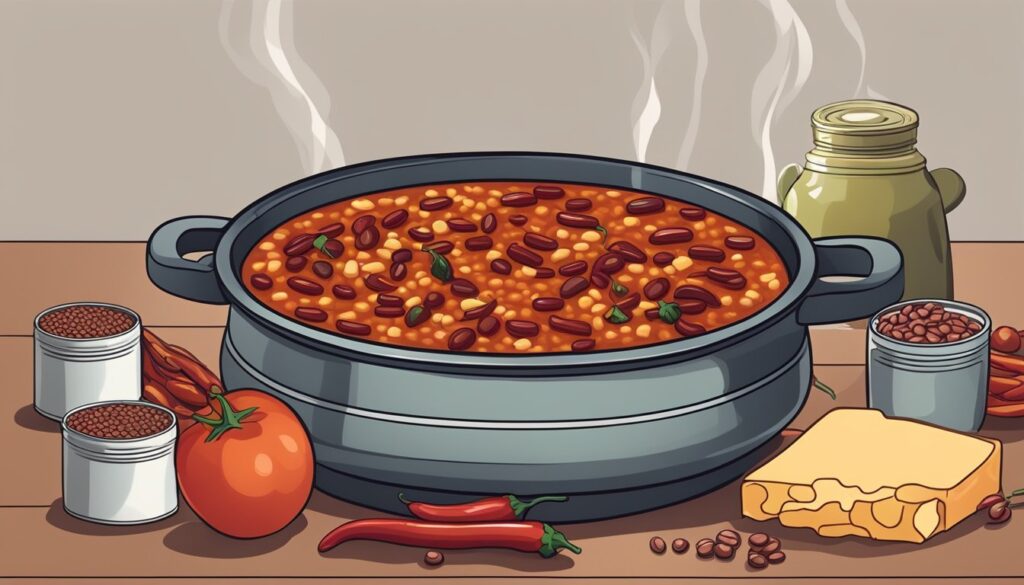Legumes, including beans, lentils, and peas, are versatile and nutritious staples found in various cuisines. They’re high in protein, fiber, and essential vitamins and minerals, making them ideal for all diets. This article explores legume-inspired recipes beyond traditional chili, including chickpea salads, black bean hummus, lentil curries, black bean burgers, and sweet red bean paste for desserts. It provides tips for cooking with legumes, such as soaking, flavor pairing, and storage. Embracing legumes enhances culinary variety and offers significant health benefits, making them valuable in any kitchen. Celebrate legumes for their taste and nutrition!
Cooking with Legumes: Versatile Beans Beyond the Chili Bowl
Legumes have held a treasured place in the culinary traditions of cultures around the globe for centuries. Often associated with hearty dishes like chili or stews, beans possess incredible versatility that allows them to shine in a myriad of recipes across cuisines. Beyond their humble beginnings as a cheap and filling source of protein, legumes are nutritional powerhouse contenders loaded with vitamins, minerals, and fiber. This article will explore the wonderful world of legumes—beyond the chili bowl—highlighting their nutritional value and offering inspiration for creative recipes.
Nutritional Benefits of Legumes
Legumes, including beans, lentils, and peas, provide an exceptional nutritional profile that makes them an excellent choice for any diet. Here’s a closer look at the nutritional benefits:
-
High in Protein: Legumes are an excellent source of plant-based protein, making them crucial for vegetarians and vegans. For example, cooked lentils provide about 18 grams of protein per cup, while black beans offer roughly 15 grams.
-
Rich in Fiber: One of the standout features of legumes is their fiber content. High fiber intake is associated with numerous health benefits, including improved digestion and a reduced risk of chronic diseases. A cup of chickpeas contains around 12.5 grams of dietary fiber.
-
Low in Fat: Most legumes are naturally low in fat, with minimal saturated fats, making them heart-healthy options compared to many animal protein sources.
-
Packed with Vitamins and Minerals: Legumes are rich in essential vitamins and minerals, including iron, magnesium, potassium, and folate. For example, kidney beans are an excellent source of folate, with one cup offering about 13% of the daily recommended value.
- Antioxidants: Many legumes, particularly black beans and lentils, are high in antioxidants that can help combat inflammation and oxidative stress in the body.
The Versatility of Legumes in Cooking
Now that we recognize the nutritional boon of legumes, let’s shift our focus to their versatility in the kitchen. Rather than relegating beans to the role of a mere chili ingredient, consider incorporating them in a variety of dishes ranging from salads and dips to casseroles and even desserts.
1. Legume Salads
Chickpea Salad with Cucumber and Avocado
Chickpeas, also known as garbanzo beans, provide a nutty flavor and firm texture, making them perfect for salads. A refreshing chickpea salad can combine diced cucumbers, creamy avocado, red onion, and a squeeze of lemon juice. This dish is rich in fiber and healthy fats, making it a nutritious, satisfying option.
Nutritional Value (per cup of chickpeas):
- Protein: 15g
- Fiber: 12.5g
- Fat: 4g
- Iron: 4.7mg
2. Legume Dips
Spicy Black Bean Hummus
Hummus is typically associated with chickpeas, but black beans can create a flavorful and vivid twist on this classic dip. Blend black beans with tahini, garlic, lime juice, cumin, and a splash of olive oil until creamy. It serves as a delightful companion to veggie sticks or whole-grain pita.
Nutritional Value (per cup of black beans):
- Protein: 15g
- Fiber: 15g
- Fat: 1g
- Folate: 256mcg
3. Legume in Curries and Stews
Lentil Vegetable Curry
Lentils are quick-cooking legumes that make a wonderful base for hearty stews and curries. Create a vibrant lentil vegetable curry by simmering lentils with coconut milk, diced tomatoes, spinach, and your favorite spices. Serve with brown rice for a complete meal.
Nutritional Value (per cup of cooked lentils):
- Protein: 18g
- Fiber: 15.5g
- Iron: 3.3mg
- Folate: 358mcg
4. Legume Burgers
Black Bean Burgers
Transform black beans into savory patties mixed with breadcrumbs, onions, and spices for a filling vegetarian burger. These can be served on whole-grain buns topped with fresh avocado and salsa for a delicious meal that pleases both vegetarians and meat lovers.
Nutritional Value (per patty):
- Protein: 10g
- Fiber: 6g
- Fat: 3g
- Magnesium: 60mg
5. Legumes in Desserts
Red Bean Paste for Desserts
In many Asian cuisines, adzuki beans are used to make sweet red bean paste, a key ingredient in desserts such as mochi and pastries. This paste is not only delicious but also provides a surprising amount of protein and fiber.
Nutritional Value (per cup of cooked adzuki beans):
- Protein: 17g
- Fiber: 13g
- Iron: 2.4mg
- Magnesium: 60mg
Tips for Cooking with Legumes
-
Soaking: Dried legumes should generally be soaked prior to cooking to reduce cooking time and enhance digestibility. Aim for at least 4-8 hours of soaking.
-
Flavor Pairing: Consider complementary flavors and ingredients such as garlic, onion, tomatoes, and various spices to elevate the taste of your legume dishes.
-
Storage: Cooked legumes can be stored in the refrigerator for up to a week or frozen for longer-term use, making them a convenient staple in meal prepping.
- Experimenting: Don’t hesitate to experiment with different legumes! Each has its unique flavor and texture, and they can interchange well in various recipes.
Conclusion
Incorporating legumes into your culinary repertoire is not only a boon for your health but also a way to explore diverse and satisfying flavors. Moving beyond classic dishes like chili opens up a world of possibilities, showcasing legumes in salads, dips, curries, burgers, and even desserts. Their high nutritional value, combined with their versatility, makes legumes a valuable ingredient for every home cook. So embrace the bean—your taste buds and your body will thank you!
